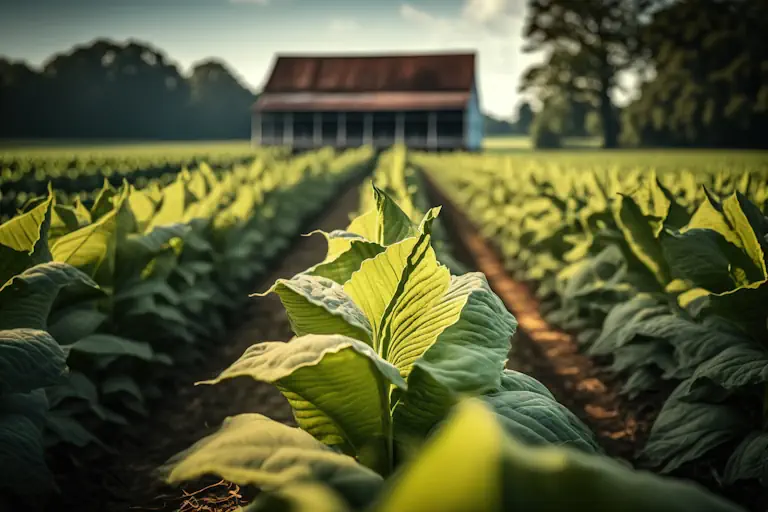Tobacco barns are an iconic part of the American agricultural landscape, particularly in the southeastern United States. These structures, with their rustic charm and historical significance, have evolved significantly over the years. This article delves into the history, types, styles, and locations of tobacco barns, and explores the transformation from fire flue-cured to oil-burning drying methods.

A Brief History of Tobacco Barns
Tobacco cultivation in the United States dates back to the early colonial period. As tobacco farming became more widespread, the need for efficient curing methods led to the development of specialized barns. These barns were designed to dry and cure tobacco leaves, a crucial step in preparing the crop for market.
Initially, tobacco was air-cured, a method that involved hanging the leaves in well-ventilated barns for several weeks. However, this method was not suitable for all types of tobacco, leading to the development of fire flue-curing.
Types and Styles of Tobacco Barns
Tobacco barns can be broadly categorized based on the curing method they support. The main types include:
- Air-Cured Barns: These barns are typically large, open structures that allow for maximum airflow. They are used primarily for curing cigar and burley tobacco.
- Fire-Cured Barns: These barns are equipped with fireboxes where hardwood fires are kept smoldering. The smoke and heat from these fires cure the tobacco, giving it a distinctive flavor.
- Flue-Cured Barns: These barns use a system of flues to distribute heat from an external firebox. This method allows for more controlled curing, essential for producing high-quality bright leaf tobacco.
The design of tobacco barns varies by region and the type of tobacco being cured. In the southeastern United States, flue-cured barns are common. These barns are typically rectangular with gabled roofs and are constructed from wood or metal.
Locations of Tobacco Barns
Tobacco barns are most commonly found in states with a rich history of tobacco farming, such as North Carolina, Virginia, and Kentucky. In these regions, the barns are often located on family farms, standing as a testament to the agricultural heritage of the area.
In North Carolina, for example, flue-cured tobacco barns are a common sight. These barns are often situated near fields of bright leaf tobacco, their weathered exteriors blending seamlessly into the rural landscape.
The Transformation from Fire Flue-Cured to Oil-Burning Drying
The transition from fire flue-curing to oil-burning drying methods marked a significant shift in tobacco farming. This change was driven by the need for more efficient and consistent curing processes.
Fire Flue-Curing: This traditional method involved building fires in external fireboxes and using flues to distribute the heat throughout the barn. While effective, this method required constant monitoring to maintain the correct temperature and humidity levels.
Oil-Burning Drying: The introduction of oil-burning systems revolutionized tobacco curing. These systems use oil burners to generate heat, which is then distributed throughout the barn via a network of pipes. This method offers several advantages over fire flue-curing, including more precise temperature control and reduced labor requirements.
The shift to oil-burning drying systems began in the mid-20th century and quickly gained popularity among tobacco farmers. The new systems allowed for more consistent curing, resulting in higher-quality tobacco and increased efficiency.
The Future of Tobacco Barns
Today, many traditional tobacco barns have been replaced by modern curing facilities. However, the old barns still hold a special place in the hearts of many farmers and rural communities. Efforts are being made to preserve these historic structures, recognizing their cultural and historical significance.
In conclusion, the evolution of tobacco barns from fire flue-cured to oil-burning drying methods reflects broader changes in agricultural practices. These barns, with their unique designs and rich history, continue to be an integral part of the American rural landscape.
For more information on the history and preservation of tobacco barns, visit Appalachian Barns, South Carolina Encyclopedia, Curing of Tobacco, and Total Leaf Supply
Shaun A. Cinson, the innovative founder and owner of Broadleaf Timber & Masonry Reclaiming, LLC, also known as Broadleaf Cabins, has been a driving force in preserving North Carolina’s historical tobacco barns. His dedication to this cause has been highlighted in Tobacco Farm Quarterly, which praised his meticulous restoration techniques and commitment to sustainability. Styles Blueprint featured Shaun’s ability to blend traditional craftsmanship with modern design, creating unique and functional spaces. The Greensboro News & Record lauded his efforts in revitalizing the local heritage, turning forgotten barns into beautiful log cabins that honor the region’s rich history. Additionally, Broadleaf was recognized as a go-to restoration company for barns in Our State Magazine and featured in a Fox 8 “Made in North Carolina” presentation. Shaun and his company have also been spotlighted in the Caswell County newspaper, The Messenger. Shaun’s passion and expertise have positioned Broadleaf as a leader in the field, celebrating the past while building for the future.


Comments